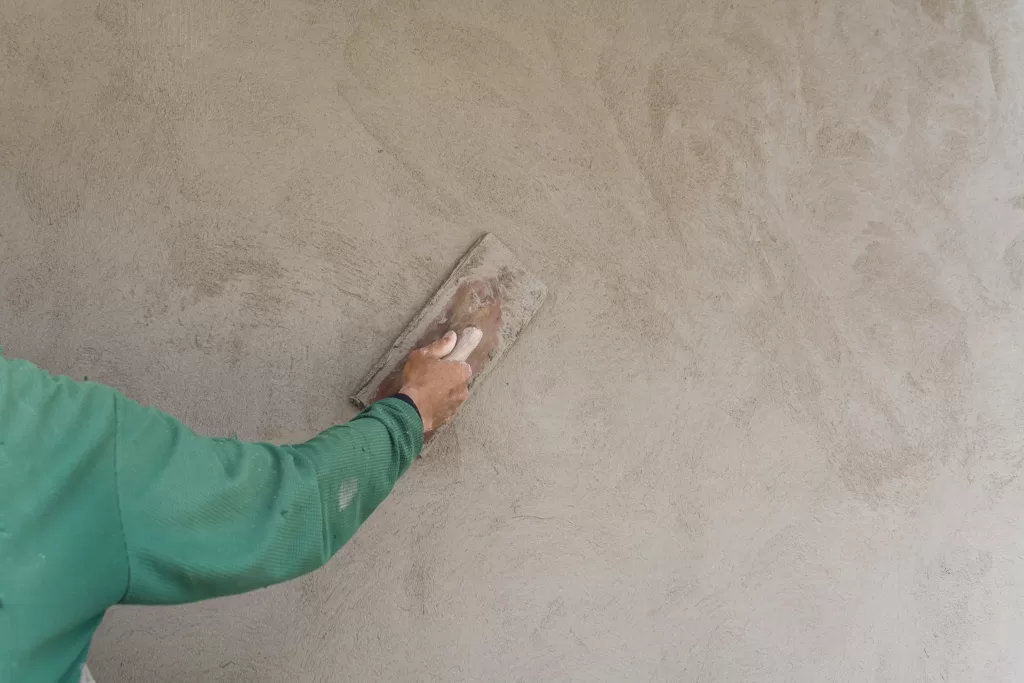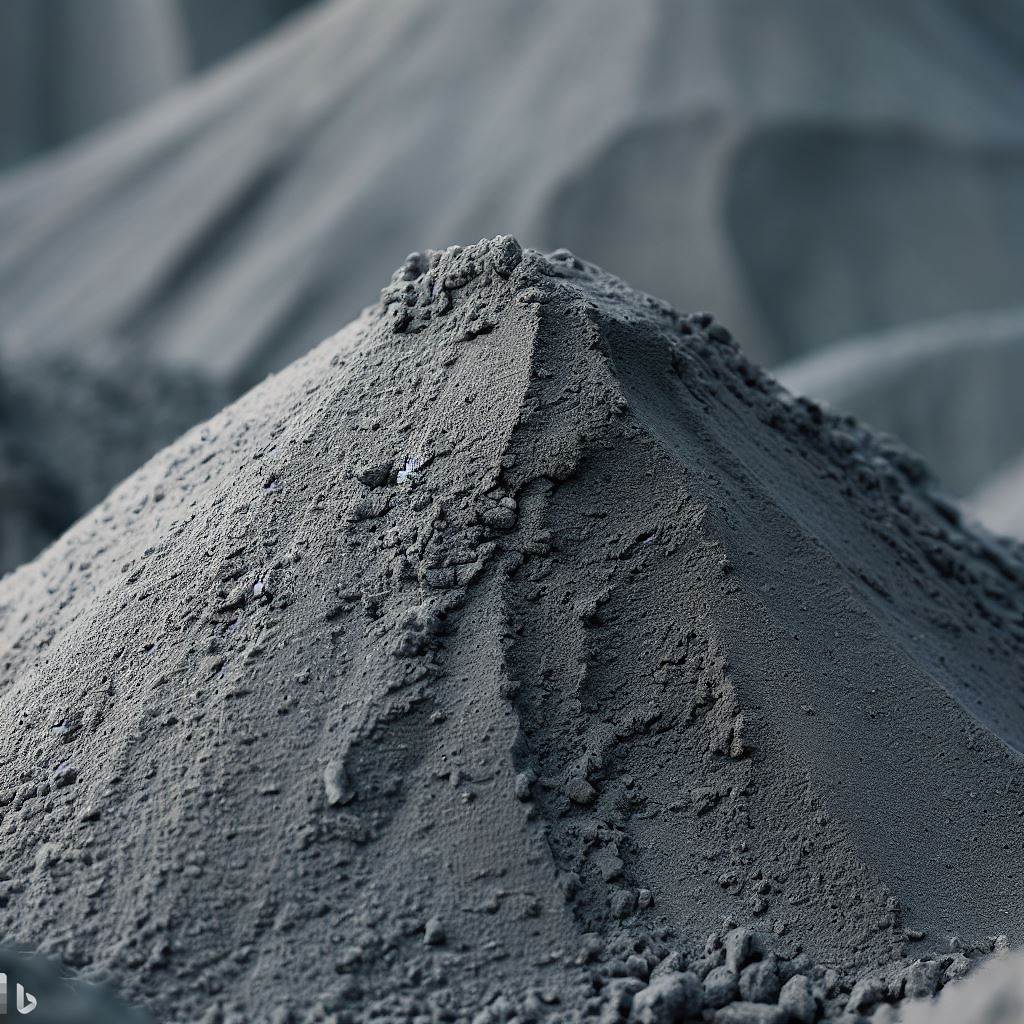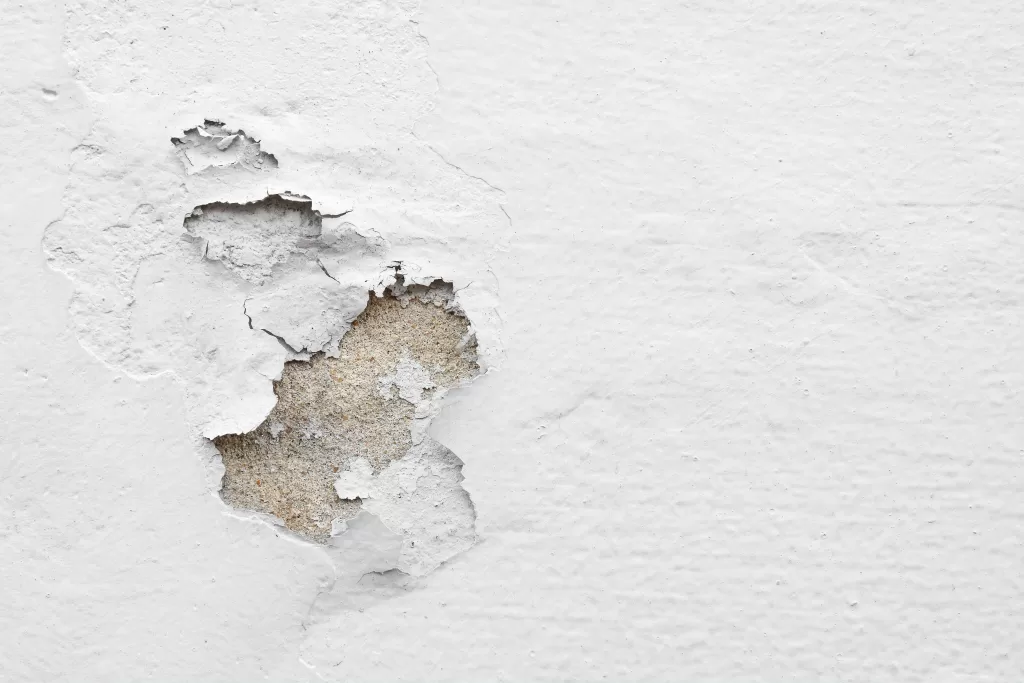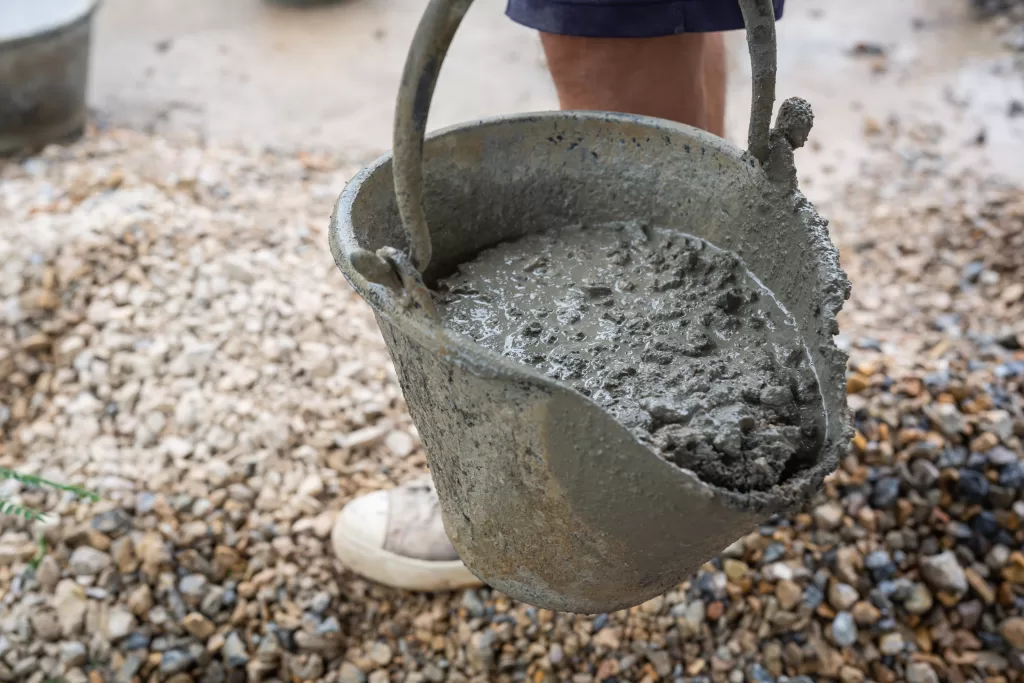Plaster is used to render the inside and outside of the walls to provide a smoother finish to the wall surfaces. Mortar is a paste used in masonry to join bricks, stones and concrete blocks. Both plaster and mortar are made by mixing cement and sand. For a smoother finish that is typically expected from walls, less sand may be used than the amount used for making mortar. At times, plaster may also be referred to as mortar. Here, you can learn about important mortar and plastering tips.
What is Plastering?
Plastering is a construction technique used to create smooth surfaces on walls, pillars ceilings and other building components. A thin layer of plaster is applied on walls and other surfaces. It is a blend of cement, lime, gypsum, or a mix of these materials combined with sand and water.
Plastering provides a protective layer on the surface to improve its durability and resistance to wear and tear. It also helps to create a flat surface by covering uneven parts. It allows for a range of finishes, textures, and decorative elements to be applied to the surface. Tiles, paint, or wallpapers are some of the elements that are applied after plastering. Therefore, it requires skilful application of mortar as it contributes to the overall appearance of the structure.
How to Select the Right Mortar Mix for Plastering?
Appropriate plaster mix is required to achieve the desired results. Different projects demand different mortar types which depend on several factors such as climatic conditions, surface conditions, and required finish. The following are the mortar ratios for plastering:
| Surface | Cement to Sand Ratio |
| Internal walls | 1:4 |
| External walls | 1:5 |
| Ceiling | 1:3 |
Here are some common types of mortar mixes:
Lime Mortar
This is the most versatile mix prepared by mixing fine aggregates i.e., lime (hydraulic or fat lime), sand and water. The lime-to-sand proportion is kept at 1:2. This mix offers excellent breathability, making it suitable for the restoration of historic structures.
Cement Mortar
It is a widely used mix that consists of cement, sand, and water. The cement-to-sand ratio ranges from 1:3 to 1:6, depending on the requirements. It provides greater strength compared to lime mortar, making it ideal for modern construction that requires a lasting plastering solution.
Surki Mortar
It contains lime, surki (burnt clay), and water commonly used in regions where surki is available. It is an economic option that offers good workability and reduced shrinkage during drying.
Gauged Mortar
This mortar mix is a combination of lime, cement, sand, and water to gain more strength. The cement-to-lime ratio varies from 1:6 to 1:9. With improved strength, this combination is economical due to lime usage and has a faster setting time which is preferable in various applications.
Mud Mortar
Also known as clay mortar, it is a traditional mix made from clay or mud, water, and organic materials such as cow dung, rice husk or sawdust. It is commonly used in regions where there is a shortage of cement and lime but an abundance of clayey soil. Although it is not as strong as cement-base mortars, it provides decent adhesion and is eco-friendly in nature, making it a suitable choice for low-load-bearing applications.
How to Prepare the Substrate for Plastering?
Properly preparing the surface before plastering is crucial to ensure strong binding between the mortar mix and the substrate. Neglecting this step can result in issues like lack of adhesion and premature cracking. Here are some valuable tips for plastering to effectively prepare the substrate:
Surface Cleaning
Make sure you remove any dust, debris, or loose material from the substrate. A clean surface will improve the strength of the bond between the mortar mix and the surface.
Repair Inspection
An important plastering tip is to check whether the surface has any cracks, holes, or uneven areas. Repair them using suitable materials.
Moisture Control
Excessive moisture can weaken adhesion while extreme dryness may cause water absorption from the mortar mix.
Use a Bonding Agent
To enhance adhesion, consider applying a bonding agent on surfaces with a greater uneven finish.
Mortar Mixing Tips
Here’s what you need to keep in mind when mixing mortar:
Choose the Appropriate Mortar Mix
Select the mortar mix that meets your project requirements, for instance, cement mortar for greater strength.
Right Proportioning
Proper adherence to proportion recommendations is required. Use gauge boxes to measure the materials by volume.
Use High-Quality Materials
Avoid using substandard materials, especially plastering cement, as they can compromise the plaster’s strength and longevity.
Water Content
Control the water content per the mix requirements. Aim for a workable yet firm consistency. For general purposes, the proportion of water content to cement is 1:3.
Mixing
Ensure a thorough and consistent mix by using appropriate mixing techniques. You may do it manually or mechanically but ensure that hand mixing should be executed on a clean, water-tight platform.
Common Plastering Issues
You must stay informed of the following common plastering issues:
Blistering
It occurs when moisture is trapped during plastering due to inadequate surface preparation. To prevent blistering, ensure proper mixing and application of plaster.
Cracking
Cracking can happen due to shrinkage in undercoats, the use of unsuitable grades of sand or movement in the background or surrounding structures. To minimise cracks, use proper curing techniques.
Crazing
These are fine cracks on the surface that occur due to uneven surface shrinkage and movements in the structure. Ensure to use well-graded sand and follow the right proportions to prevent crazing.
Bond Failure
Poor adhesion may result in hollow patches, flaking of topcoats or peeling of substantial areas. To prevent bond failure, ensure that there is no penetration of moisture from outside.
JK Cement, one of the country’s leading cement companies helps you to build sustainable and robust structures that stand tall for years to come.
FAQs
What is the best mortar for plastering?
It depends on the requirements and desired results. For instance, if you are restoring a historical structure, lime mortar is suitable while cement mortar is commonly used in modern construction.
What are the steps of plastering?
The steps involved in plastering are as follows:
- Cleaning the surface.
- Repairing cracks or uneven areas.
- Dampening the surface.
- Preparation of mortar mix.
- Application of plaster in layers
- Smoothing and finishing
- Curing
How do I mix mortar for plastering?
To prepare mortar, mix the appropriate proportions of cement, lime, or other additives with sand and water. Mix the ingredients thoroughly until you get the desired consistency.
What is the difference between plastering and mortar?
Plastering is the process of applying multiple coats of plaster on walls or ceilings for a smooth finish. On the other side, mortar is used to bind bricks in masonry construction. While both involve the mixing of cement, sand and water, their purpose and application are different.














